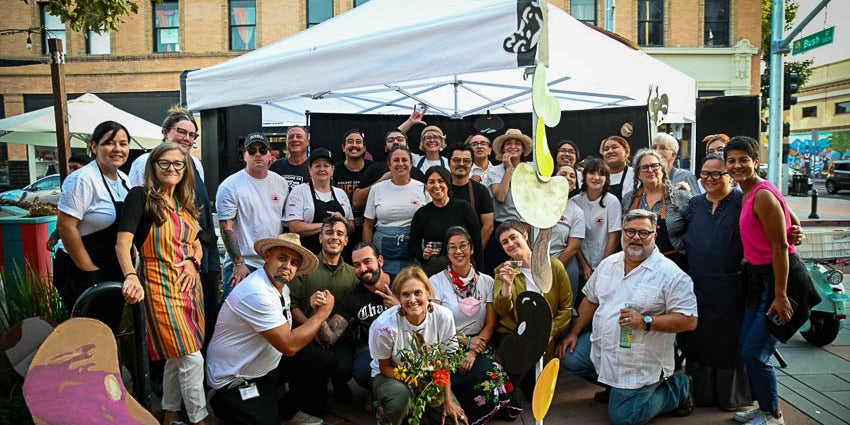





White Corn Posole/Prepared Hominy
Free shipping on orders $50+
The essential nixtamalized grain, prepared in small batches, for hominy stews. New-crop heirloom corn makes our dried hominy even more superior to canned versions.
After a gentle simmer, dried hominy opens up like a delicious flower and is ready to use in soups, stews and the classic southwestern and Mexican dish, Pozole (or Posole). The corn is prepared by soaking in mineral lime (cal), then removing the skins. This process, called nixtamalization, changes the flavor (for the better) and introduces the vitamin niacin, making this ancient grain healthier and more nutritious than simple corn or cornmeal.
When you are cooking posole, your whole kitchen smells like a glorious, delicious wet tortilla, and then the real fun begins. Use cooked hominy to make Pozole: follow our recipes for white pozole, red pozole, and green pozole. You can also use cooked hominy in salads, soups and stews, or tossed with some beans or bitter greens. Leftovers can be pureed for hominy grits.
Cooking Instructions
Sort and rinse hominy. Soak for 8 hours in cold water, then drain. Add to a large pot with 1 roughly chopped onion and cover with 2 inches of fresh water. Bring to a hard boil over high heat for 5 minutes, then reduce to a gentle simmer. Cook hominy uncovered until chewy and tender but not chalky, approximately 2 hours. Hominy usually flowers, like popcorn, when finished. Reserve 2 cups of cooking liquid for later use, then drain. One pound (or 2 cups) dried hominy yields about 7 cups when cooked, and substitutes for canned hominy in recipes with none of the rubbery texture.
"I periodically buy fantastic dried hominy from the folks at Rancho Gordo; the stuff rocks. "
Joe Yonan
The Washington Post


